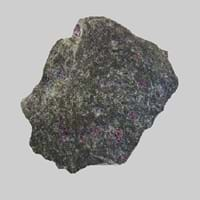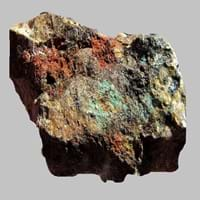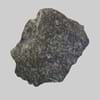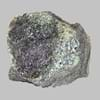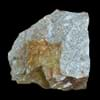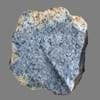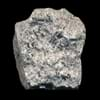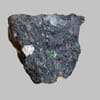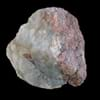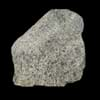Definition
Peridotite is a dense, coarse-grained plutonic is the main constituent of the earth's mantle
Jasperoid is a rare, peculiar type of metasomatic alteration of rocks
Origin
Pike County, U.S
USA
Discoverer
Unknown
Unknown
Etymology
From French, from peridot + -ite
From silica, the main mineral content of Jasperoid
Class
Igneous Rocks
Sedimentary Rocks
Sub-Class
Durable Rock, Medium Hardness Rock
Durable Rock, Medium Hardness Rock
Group
Plutonic
Not Applicable
Other Categories
Coarse Grained Rock, Opaque Rock
Coarse Grained Rock, Fine Grained Rock, Medium Grained Rock, Opaque Rock
Texture
Phaneritic
Earthy
Color
Dark Greenish - Grey
Black, Brown, Green, Grey, Pink, White
Durability
Durable
Durable
Scratch Resistant
Yes
Yes
Appearance
Rough and Shiny
Glassy or Pearly
Interior Uses
Decorative Aggregates, Interior Decoration
Decorative Aggregates, Floor Tiles, Homes, Interior Decoration
Exterior Uses
As Building Stone, As Facing Stone, Garden Decoration
As Building Stone, Garden Decoration, Office Buildings, Paving Stone
Other Architectural Uses
Curbing
Curbing
Construction Industry
As Dimension Stone, Cobblestones
As a Flux in the Production of Steel and Pig Iron, As a Sintering Agent in Steel Industry to process Iron Ore, As Dimension Stone, Cement Manufacture, for Road Aggregate, Making natural cement, Manufacture of Magnesium and Dolomite Refractories, Production of Glass and Ceramics, Serves as an Oil and Gas Reservoir rock
Medical Industry
Not Available
Taken as a Supplement for Calcium or Magnesium
Antiquity Uses
Monuments, Sculpture, Small Figurines
Artifacts, Jewellery, Monuments, Sculpture
Commercial Uses
Creating Artwork, Gemstone, Jewelry, Source of Chromite, Platinum, Nickel and Garnet, Source of Diamonds
An Oil and Gas Reservoir, As a Feed Additive for Livestock, Gemstone, Metallurgical Flux, Production of Lime, Soil Conditioner, Source of Magnesia (MgO)
Types
Dunite, Wehrlite, Harzburgite, Lherzolite and Pyrolite
Not Available
Features
Constitutes upper part of the Earth's mantle, Generally rough to touch, Host rock for Diamond, Is one of the oldest rock
Host Rock for Lead, Traps for subsurface fluids like Oil and Natural Gas., Zinc and Copper Deposits
Archaeological Significance
Famous Monuments
Not Available
Not Available
Famous Sculptures
Not Available
Not Available
Formation
Peridotites can be formed in two ways: as mantle rocks formed during the accretion and differentiation of the Earth or as cumulate rocks formed by precipitation of olivine and pyroxenes from basaltic magmas.
Jasperoid is a rare and peculiar type of metasomatic alteration of rocks. It is formed by extreme alteration of wall rocks within a shear zone which may occur in sediments, andesites, trachytes and basalts.
Mineral Content
Amphibole, Chromite, Garnet, Magnesium, Olivine, Phlogopite, Plagioclase, Pyroxene
Clay Minerals, Pyrite, Quartz, Sulfides
Compound Content
Ca, Fe, Mg, Potassium, Silicon Dioxide, Sodium, Titanium Dioxide
NaCl, CaO, Carbon Dioxide, Magnesium Carbonate, MgO
Types of Metamorphism
Burial Metamorphism, Cataclastic Metamorphism, Contact Metamorphism, Hydrothermal Metamorphism, Impact Metamorphism, Regional Metamorphism
Burial Metamorphism, Cataclastic Metamorphism, Regional Metamorphism
Types of Weathering
Biological Weathering, Chemical Weathering, Mechanical Weathering
Not Applicable
Types of Erosion
Chemical Erosion
Not Applicable
Grain Size
Coarse Grained
Medium to Fine Coarse Grained
Fracture
Irregular
Conchoidal
Porosity
Less Porous
Less Porous
Luster
Shiny
Vitreous and Pearly
Cleavage
Not Available
Perfect
Specific Gravity
3-3.01
2.8-3
Transparency
Translucent to Opaque
Transparent to Translucent
Density
3.1-3.4 g/cm3
2.8-2.9 g/cm3
Resistance
Heat Resistant, Pressure Resistant, Wear Resistant
Heat Resistant, Pressure Resistant, Wear Resistant
Deposits in Eastern Continents
Asia
China, India, Indonesia, Kazakhstan, Russia, South Korea, Thailand, Turkey
China, India
Africa
Morocco, South Africa
Morocco, Namibia
Europe
Finland, France, Georgia, Germany, Great Britain, Italy, Kazakhstan, Netherlands, Norway, Spain, Switzerland
Austria, Italy, Romania, Spain, Switzerland
Others
Not Available
Not Available
Deposits in Western Continents
North America
Canada, USA
Mexico, USA
South America
Brazil
Brazil, Colombia
Deposits in Oceania Continent
Australia
New Zealand, Western Australia
New South Wales, Queensland, Yorke Peninsula
All about Peridotite and Jasperoid Properties
Know all about Peridotite and Jasperoid properties here. All properties of rocks are important as they define the type of rock and its application. Peridotite belongs to Igneous Rocks while Jasperoid belongs to Sedimentary Rocks.Texture of Peridotite is Phaneritic whereas that of Jasperoid is Earthy. Peridotite appears Rough and Shiny and Jasperoid appears Glassy or Pearly. The luster of Peridotite is shiny while that of Jasperoid is vitreous and pearly. Peridotite is available in dark greenish - grey colors whereas Jasperoid is available in black, brown, green, grey, pink, white colors. The commercial uses of Peridotite are creating artwork, gemstone, jewelry, source of chromite, platinum, nickel and garnet, source of diamonds and that of Jasperoid are an oil and gas reservoir, as a feed additive for livestock, gemstone, metallurgical flux, production of lime, soil conditioner, source of magnesia (mgo).
